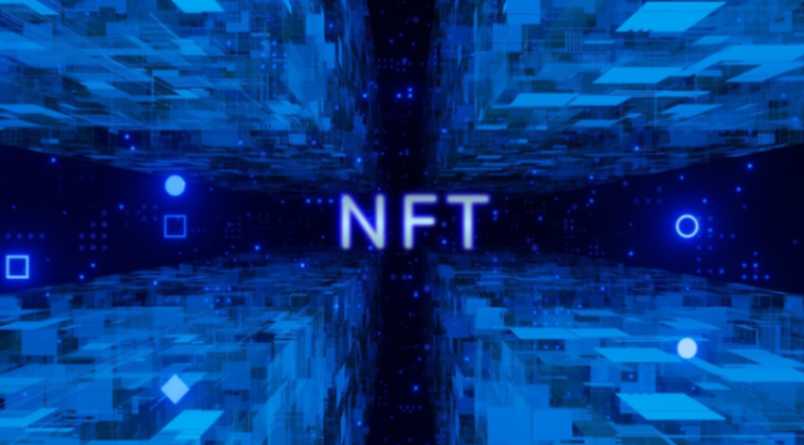As we increasingly rely on digital communication, ensuring that data is transmitted securely across networks is paramount. Enter QXEFV, a term that has started to gain traction in the field of cybersecurity and data encryption. Though it may sound like just another acronym in the tech world, QXEFV represents a significant advancement in secure data transmission technologies. This article explores the concept of QXEFV, its applications, benefits, and the potential it holds for the future of secure communications.
Understanding QXEFV
QXEFV is an acronym that stands for Quantum Xtreme Encrypted File Verification, a cutting-edge technology designed to enhance the security of data transmission and storage. It combines principles of quantum computing with advanced encryption techniques to create a system that is virtually impervious to hacking and data breaches. While quantum computing itself is still in its early stages, the integration of quantum principles into encryption technologies like QXEFV is a game-changer for cybersecurity.
At its core, QXEFV uses quantum key distribution (QKD) as the basis for its encryption protocols. QKD leverages the principles of quantum mechanics to generate encryption keys that are nearly impossible to intercept or decipher without detection. This means that any attempt to eavesdrop on a QXEFV-encrypted communication would immediately alert the involved parties, ensuring the integrity and confidentiality of the transmitted data.
The Importance of Secure Data Transmission
Before diving deeper into QXEFV, it’s important to understand why secure data transmission is so crucial in today’s world. As individuals and organizations, we transmit vast amounts of data every day, ranging from personal information and financial transactions to corporate secrets and government communications. If this data falls into the wrong hands, the consequences can be devastating, including identity theft, financial loss, and even national security threats.
Traditional encryption methods, such as AES (Advanced Encryption Standard), have been effective in securing data for many years. However, with the advent of quantum computing, these methods are becoming increasingly vulnerable. Quantum computers have the potential to break traditional encryption algorithms much faster than classical computers, posing a significant threat to data security. This is where QXEFV comes into play, offering a quantum-resistant solution that ensures the continued protection of sensitive information.
How QXEFV Works
QXEFV operates on a multi-layered encryption framework, combining quantum key distribution with advanced file verification processes. Here’s a breakdown of how it works:
- Quantum Key Distribution (QKD): The foundation of QXEFV’s encryption lies in QKD. This process involves the generation of encryption keys using quantum bits (qubits), which are sent to the intended recipient through a quantum communication channel. The unique properties of qubits allow them to exist in multiple states simultaneously, making it impossible for an eavesdropper to intercept the key without being detected. If any interference is detected during transmission, the key is discarded, and a new one is generated, ensuring that only the intended parties can access the encrypted data.
- Xtreme Encryption Algorithms: Once the quantum key is securely transmitted, it is used to encrypt the data using advanced encryption algorithms. These algorithms are designed to withstand attacks from both classical and quantum computers, providing an additional layer of security. The encrypted data is then transmitted across the network to the intended recipient.
- File Verification: Upon receiving the encrypted data, QXEFV’s file verification process kicks in. This involves checking the integrity of the received data to ensure that it has not been tampered with during transmission. Any discrepancies detected during this process trigger an alert, prompting the involved parties to investigate the potential breach.
- Decryption: Finally, the recipient uses the previously transmitted quantum key to decrypt the data. Since the key was securely transmitted using QKD, the decryption process is guaranteed to be safe from eavesdropping or interference.
Applications of QXEFV
The applications of QXEFV are vast and varied, spanning multiple industries and sectors. Here are some key areas where QXEFV can make a significant impact:
- Financial Services: The financial industry relies heavily on secure data transmission for transactions, customer data management, and communication between institutions. QXEFV can protect sensitive financial data from cyber threats, ensuring that transactions and customer information remain secure.
- Healthcare: In the healthcare sector, the protection of patient data is paramount. QXEFV can be used to secure electronic health records (EHRs), medical research data, and communication between healthcare providers, ensuring that patient information is kept confidential and safe from unauthorized access.
- Government and Defense: Government agencies and defense organizations deal with highly sensitive information that, if compromised, could have serious national security implications. QXEFV can provide a secure communication channel for transmitting classified information, protecting it from espionage and cyber-attacks.
- Corporate Communications: Businesses often transmit sensitive information, such as intellectual property, trade secrets, and strategic plans, over digital networks. QXEFV can help safeguard this information, preventing data breaches that could have severe financial and reputational consequences.
- Telecommunications: The telecommunications industry is at the heart of digital communication, making it a prime target for cyber threats. QXEFV can be integrated into communication networks to secure voice, video, and data transmission, ensuring that users’ conversations and information remain private.
The Future of QXEFV
As quantum computing continues to evolve, the importance of quantum-resistant encryption technologies like QXEFV will only grow. The development of more powerful quantum computers will make traditional encryption methods obsolete, necessitating the widespread adoption of quantum-based solutions. QXEFV is poised to become a cornerstone of secure data transmission in this new era, providing the tools needed to protect sensitive information from emerging threats.
Looking forward, the integration of QXEFV into existing cybersecurity frameworks will be critical. This may involve updating current encryption standards, training cybersecurity professionals in quantum technologies, and developing new protocols to manage quantum-secure communications. As more industries recognize the need for quantum-resistant encryption, QXEFV is likely to become a standard in secure data transmission.
Challenges and Considerations
Despite its potential, the implementation of QXEFV is not without challenges. Quantum technology is still in its infancy, and the infrastructure needed to support QXEFV is not yet widely available. Additionally, the complexity of quantum encryption may pose difficulties for organizations without the necessary expertise to implement and manage QXEFV systems.
Another consideration is the cost associated with adopting quantum-based encryption technologies. While the long-term benefits of QXEFV are clear, the initial investment required to integrate it into existing systems may be prohibitive for some organizations. However, as the technology matures and becomes more accessible, the cost is expected to decrease, making it a viable option for a wider range of users.
Conclusion
QXEFV represents a significant advancement in the field of secure data transmission, offering a quantum-resistant solution to the growing threat posed by quantum computing. By combining quantum key distribution with advanced encryption and file verification processes, QXEFV provides a robust framework for protecting sensitive information across various industries. As the technology continues to evolve, QXEFV is set to play a crucial role in the future of cybersecurity, ensuring that data remains secure in an increasingly digital world. Read More About



Thank you for your sharing. I am worried that I lack creative ideas. It is your article that makes me full of hope. Thank you. But, I have a question, can you help me?
I don’t think the title of your article matches the content lol. Just kidding, mainly because I had some doubts after reading the article.